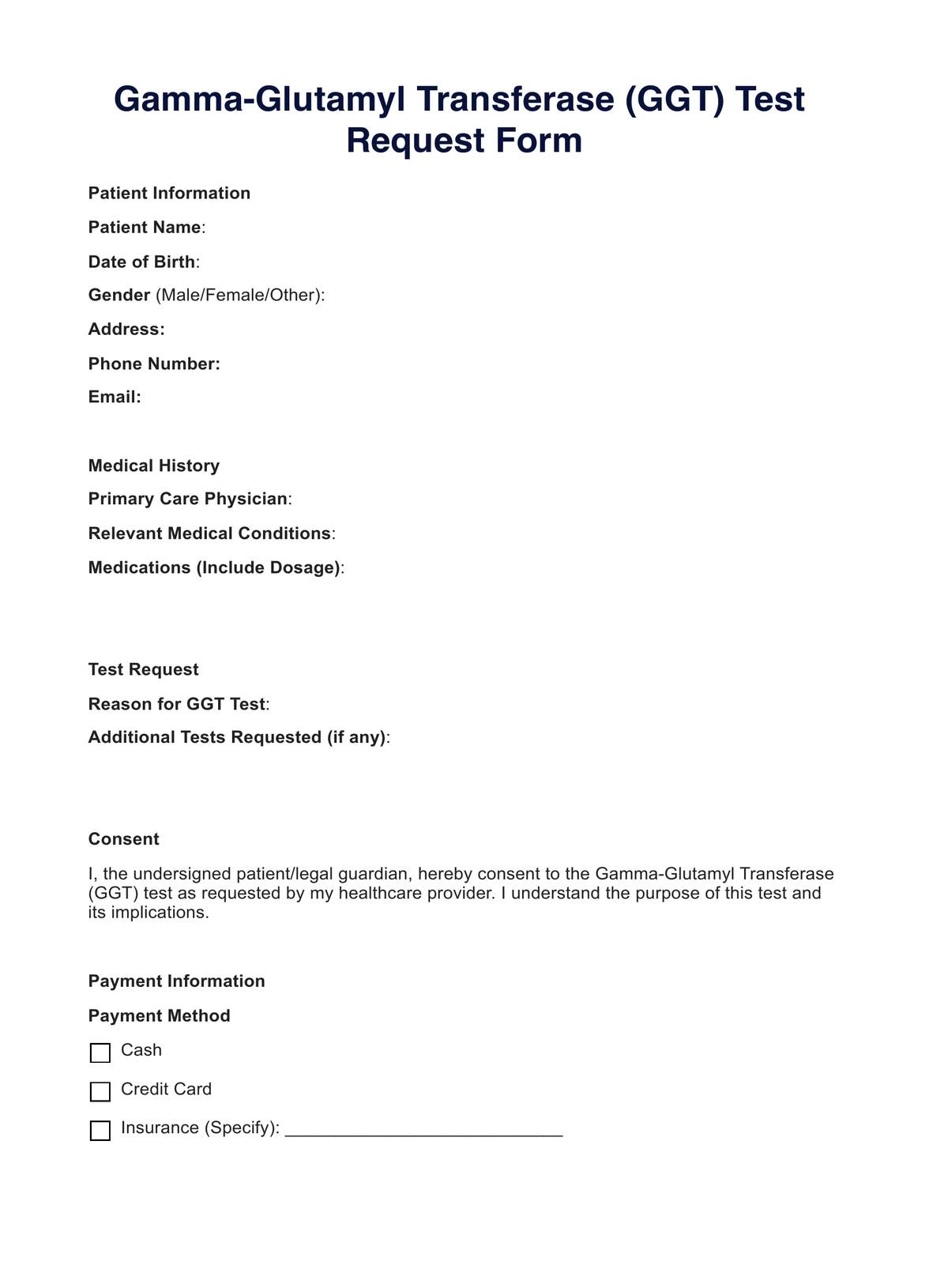Healthcare providers, including primary care physicians, hepatologists, gastroenterologists, and other specialists, typically request GGT tests.

Gamma-Glutamyl Transferase
Request, track, and manage Gamma-Glutamyl Transferase tests with our comprehensive form. Ensure efficient patient care. Download the PDF now.
Use Template
Gamma-Glutamyl Transferase Template
Commonly asked questions
GGT tests assess liver and biliary system function, diagnose liver diseases, evaluate alcohol-induced liver damage, and monitor certain medications' effects on the liver.
A blood sample is collected from the patient and then analyzed in a laboratory to measure GGT levels. Healthcare providers interpret results to assess liver health.
EHR and practice management software
Get started for free
*No credit card required
Free
$0/usd
Unlimited clients
Telehealth
1GB of storage
Client portal text
Automated billing and online payments











